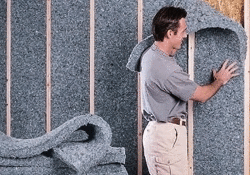WAYS TO DISGUISE

Not all home comforts are pleasing to the eye, so decide what can be discreetly hidden and choose good contemporary designs for pieces which cannot. Radiators, for example, can be painted to match the walls (try a sponged or dragged finish), or boxed in behind mesh, sheet cane, or fretwork panels. Classic designs work well in most settings: Raeburn and Aga cookers, deep Belfast and London china sinks, bath tubs with Edwardian- style taps and shower cradles all look attractive in the traditional home. What should be avoided is the temptation to put modern conveniences in period dress. Colour Colour can play an important part in disguising or enhancing the proportions of a room. You car make the room feel spacious with pale, cool colours, or draw the surfaces inwards with warmer tones and darker colours. Look at the proportions of a room. High ceilings may make the room appear cavernous so dark colours or patterned finishes will reduce that feeling and hel the room feel and look cosier. Relieve the claus trophic effects of low-ceilinge. cottages and modern houses with pale colours on the ceilings. Paint effects applied to doors and windows, for example, help to diminish their importance so they are not so noticeable. Other visual colour techniques are vertical stripes to give the impression of height, and dominant all-over patterns to unify a large space by making the walls appear to advance. Picture rails and dado rails, dividing the room into bands of colour can also help to reduce the apparent height of a room, but avoid too many divisions if ceilings are low. On reflection Mirrors are invaluable because they increase both light and space and add to the decoration of a room - as well as serving as a looking glass. Mirror can be fitted behind shelves to increase the impact of plants or ornaments. Placed next to a window, in traditional pier-glass style, it will increase the availability of light, while an over mantel mirror balances and increases the impact of a fireplace.